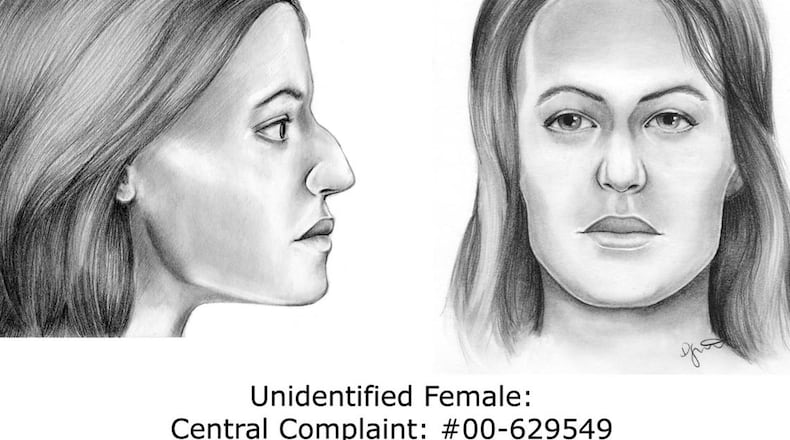Authorities said Friday they have identified the skeletal remains of a woman who was murdered along with 10 to 16 others and left scattered along a suburban New York beach over nearly 20 years.
The suspect known as the Long Island serial killer was never caught.
DNA technology was used to positively identify the “Manorville Jane Doe,” also referred to as “Jane Doe #6,” Suffolk County Police Department officials announced Friday.
Authorities did not immediately release the woman's name and declined to release other critical details, although a Twitter post said additional information about the latest development would be shared soon on a website devoted to the case.
The victim’s partial remains were first discovered by hunters in a wooded area off Halsey Manor Road in Manorville, New York, on Nov. 19, 2000. More than 10 years would pass before police found the rest of her remains more than 40 miles away near Gilgo Beach, where 11 other victims were discovered.
Investigators have never determined who carried out the crimes or whether there may be more than one suspect.
Many investigators who worked the case through the years have concluded that it is unlikely one person killed all the victims.
The case has attracted national headlines, been featured on true-crime television shows and was the subject of a recent Netflix film.
The previously unidentified woman is at least the second whose remains were found at the beach and also in Manorville. Police found the skull of Jessica Taylor, a 20-year-old prostitute who disappeared in 2003, near Gilgo Beach and most of the rest of her body in a wooded area of Manorville.
In January, investigators revealed new evidence that they hoped would lead to an arrest, but no major developments have been announced in the case until now.
Authorities revealed a black leather belt left behind at one of the crime scenes may have belonged to an unknown suspect.
Credit: The Associated Press
Credit: The Associated Press
“We do believe that this item was handled by the suspect and did not belong to any of the victims,” said Suffolk County Police Commissioner Geraldine Hart. A previously unreleased photograph of the belt shows the initials HM or WH, depending on the perspective. As the years have passed, investigators have said it is unlikely one person killed all the victims.
Netflix released a film about the unsolved killings March 13.
The case has remained unsolved since "Jane Doe #6," led to the discovery of 11 sets of human remains scattered along Long Island's South Shore.
Last fall, state officials gave investigators the green light to ask the FBI to deploy genetic genealogy, a technique in which genetic profiles are run though databases to find potential relatives of a homicide victim or suspect. It’s that technology that led to the woman’s identification, police said.
— Information provided by The Associated Press was used to supplement this report.
About the Author
The Latest
Featured


